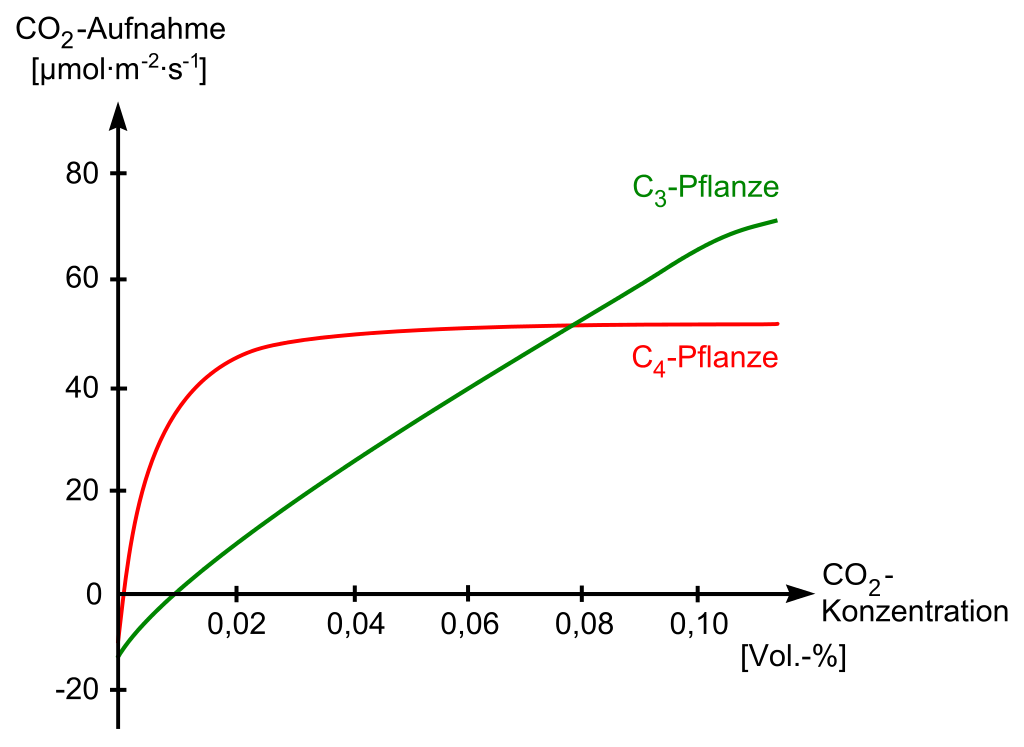Carbon dioxide as a “good greenhouse gas”
plants need CO2 as a basic prerequisite for photosynthesis. The so-called C3-plants ( most plants of the middle latitudes, useful plants like e.g.B. wheat, rye or rice) perform different compared to the C4-plants (typically grasses, crops such as corn, sugar cane or millet):

This diagram shows that plants can better absorb CO2 the higher their concentration in the air is. For C4 plants, the optimal absorption capacity is already almost reached at the — current — CO2 concentration of about 400 ppm, while C3 plants “feel better” at much higher concentrations of 800-1000 ppm. Therefore, greenhouses are enriched with CO2 to improve plant growth. The diagram also shows that a CO2concentration below 150 ppm would mean the end of all life.

Satellite measurements were used to determine the effects of increased CO2-concentration on global plant growth, with the astonishing result that between 1982 and 2009 the greening of the soil increased by 25-50%, 70% of which was due to the increase in CO2>. In particular, parts of the earth’s arid regions have become greener. This can be explained by the fact that the openings of the leaves to the inlet of CO2 (Stomata) are the same as the openings through which the water evaporates. The more CO2 is present, the less stomata have to be opened and the plant becomes more resistant to drought.
This film from a NASA publication from the year 2016 shows the essential connections briefly and vividly:
An additional reason for the increased greening in Asia is Intensification of agriculture and forestry, mainly in China and India, as has been the case for some time in Europe. Additional fertilization and irrigation produce several harvests per year, which together with the increase in growth due to CO2 contributes significantly to the food security of the world’s population — Since 2000, agricultural yields have increased by more than 35% in India and China without an increase in the area used for agriculture.
One of the founders of Greenpeace, Dr. Patrick Moore, who left the organisation because of its one-sided political orientation, explains the positive significance of CO2 in the context of the current climate debate
Greening and environmental protection
In order not to be misunderstood – the objectively correct and consequently extraordinarily optimistic perspectives for nature, which result from the increase of CO2 in the atmosphere, by no means mean that with regard to the protection of the environment and the preservation of creation “everything is fine” on our planet earth.
The long known problems such as monocultures, deforestation, slash-and-burn, biodiversity, urban sprawl, water pollution, air pollution, etc. are still acute and require responsible and rapid action.
Recent events indicate particular urgency for responsible flood prevention and forest fuel load management. The good news is that such actions can be initiated very effectively on a local or national level.
If we succeed in ending the pathological panic fixation on CO2, then we will also have the political chance again to tackle the actual problems with the necessary urgency and consistency.
